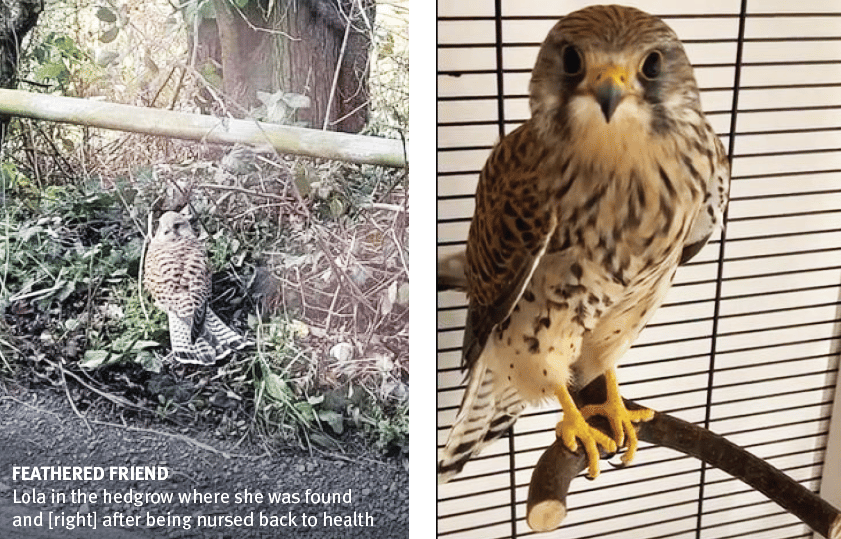The founder of Tunbridge Wells-based organisation Gabo Wildlife, Carly Ahlen, received a call on February 8 about an injured bird of prey on Bidborough Ridge.
“The lady who called had tried to rescue it herself, but to no avail as the kestrel escaped into some thick brambles,” Carly told the Times.
“Lola [the kestrel] had been hit by an oncoming car and her wing was so damaged that she was unable to fly away. I had to crawl into the brambles, but I caught her in one try and took her to my vet.”
In a scenario reminiscent of the 1969 film Kes, in which a young boy nurses an injured kestrel back to health, Carly has since been able to release the bird back into the wild after its injuries healed, but has issued a warning to local motorists.
“Birds of prey really like the edges of roads. There is garbage at the edges which people have thrown out of their car. This attracts rodents, and then that attracts birds of prey”
She said: “Birds of prey really like the edges of roads. There is garbage at the edges which people have thrown out of their car. This attracts rodents, and then that attracts birds of prey.
“It’s a neon light to all sorts of wildlife to get closer. Also the salting of the motorway in winter creates nutrient-rich grasslands that offer good grazing for rabbits and voles.
“Wildlife attracted to that food [the rodents] can also get hit, creating a miserable cycle of wildlife death.”
The kestrel was extremely underweight when Carly captured her – just 171 grams, whereas a female kestrel should be around 184 grams.
“Female kestrels are slightly larger than male kestrels, and smaller raptors are less tolerant of starvation than larger birds,” she added.
“After weeks of hand-feeding Lola was well enough to spread her wings, and Carly took her to the UK Owl and Raptor Centre in Groombridge”
After weeks of hand-feeding and gentle handling in a confined space, Lola was well enough to spread her wings, and Carly took the bird to Daniel Clark at the UK Owl and Raptor Centre in Groombridge.
“We organised that Lola could use an enriched aviary he had free, so I could build her up for one more week before releasing her,” said Carly, explaining that an aviary allowed birds to re-acclimatise to the wild, and finish recovering without too much contact with humans.
Carly released Lola on March 17 in a local field.
The wide open spaces of the area around Tunbridge Wells underlines the importance of the area for Carly’s wildlife work, but it was her childhood experiences which drew her to found Gabo Wildlife here three years ago.
“I feel most at home in Tunbridge Wells after spending my whole childhood at Fosse Bank Girls School from the age of eight.
“Rather than being engrossed in books or missing my family at such a young age as a full time boarder, I was out in the sprawling gardens exploring wildlife.
“Toads, badgers, foxes and owls and birds have always fascinated me. I feel most at home with wildlife and I think my disability – being profoundly deaf – has made me connect with nature much better than with people because I understand their body language incredibly well!”
“Gabo Wildlife is all self-funded. I do rehabilitation of British wildlife. It could be a hedgehog or it could be an owl. I’m about to start some training as a marine medic, too.”
Gabo Wildlife is on Facebook: @gabowildlife
& listed at helpwildlife.co.uk
See also:
By Victoria Roberts








